
 |
Eager Space | Videos by Alpha | Videos by Date | All Video Text | Support | Community | About |
|---|
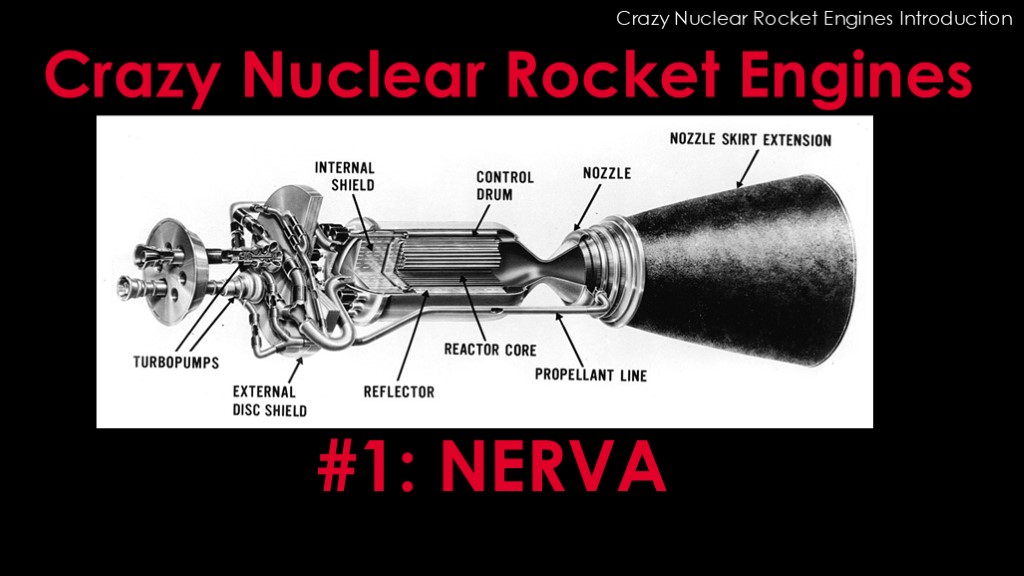
Welcome to Crazy Nuclear Rocket Engines Episode #1.
We will start with the first nuclear rocket engine, NERVA. If you haven't watched it yet, I highly recommend watching the crazy nuclear rocket engines introduction first.
https://www.youtube.com/watch?v=eDNX65d-FBY
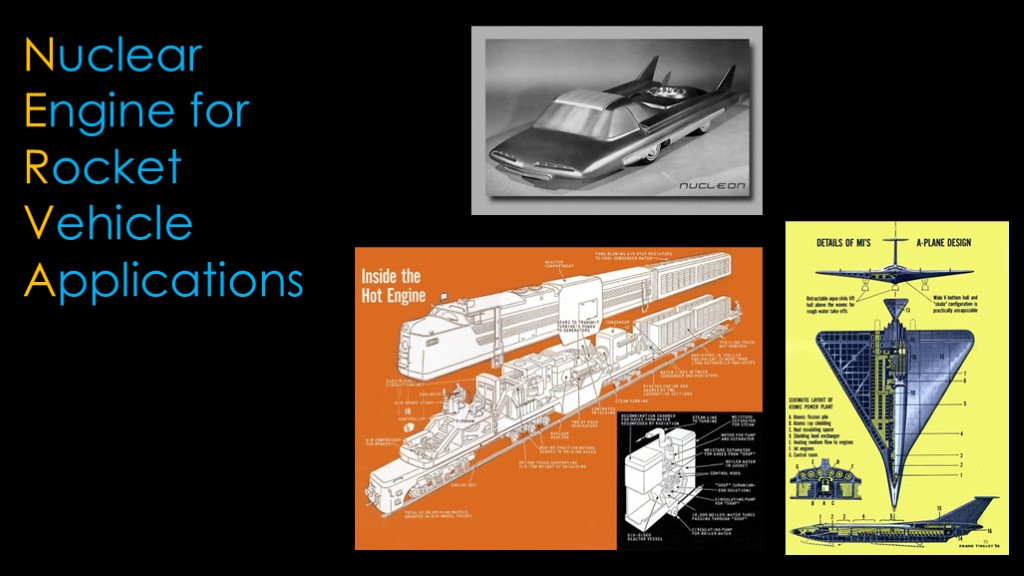
Nerva stands for
Nuclear
Engine for
Rocket
Vehicle
Applications
It came out of the "atomic" 1950s, when there were designs for atomic locomotives, atomic planes, and even atomic cars.
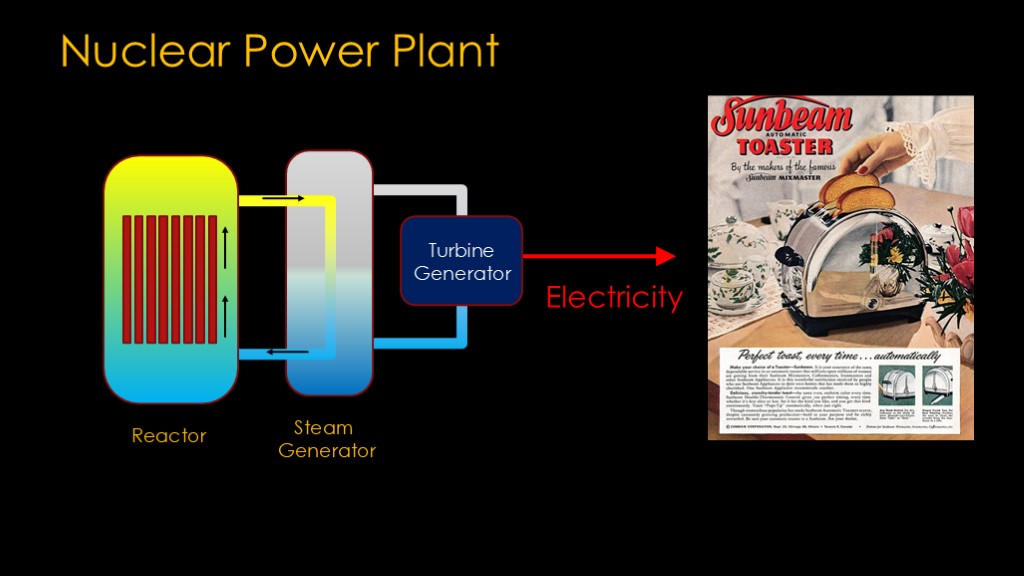
To understand how nerva works, we'll start with nuclear power plants.
In a nuclear power plant, we have a reactor that is used to heat high pressure water.
That water travels into a steam generator where it heats up water to make steam, which is fed to a turbine generator to make electricity, which we use to make toast.
The whole point is to use a nuclear reactor as a heat source.
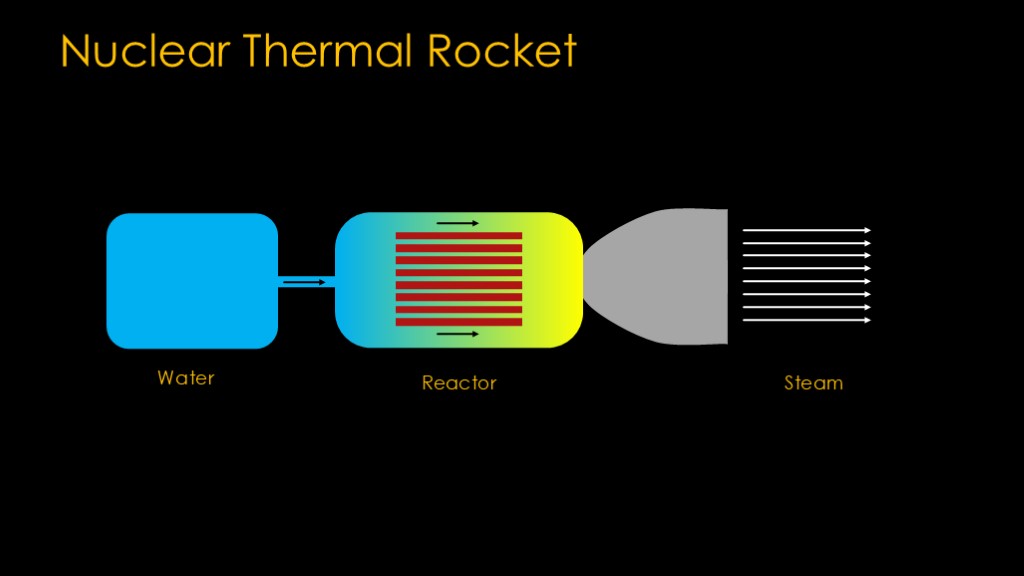
Let's convert that to a nuclear thermal rocket. We'll start with the reactor. We add a water tank to feed water into the reactor, put a rocket nozzle on the outlet, and we get a nice stream of steam coming out the nozzle which gives us thrust.
Unfortunately, it's not a very good rocket, because water molecules are heavy.
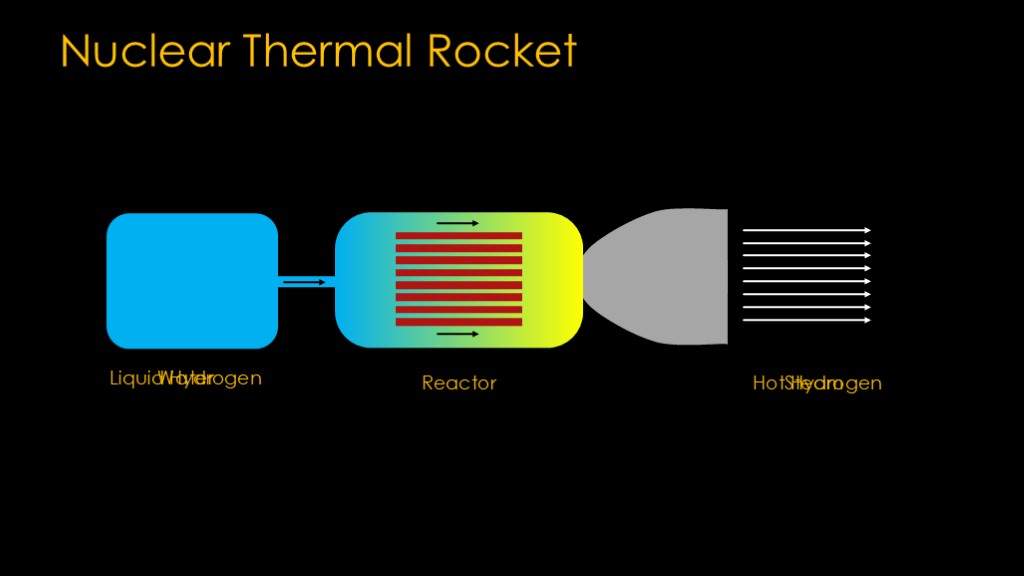
We empty the water tank and fill it with liquid hydrogen as propellant, and we get hot hydrogen out the exhaust. Much better from an efficiency perspective.
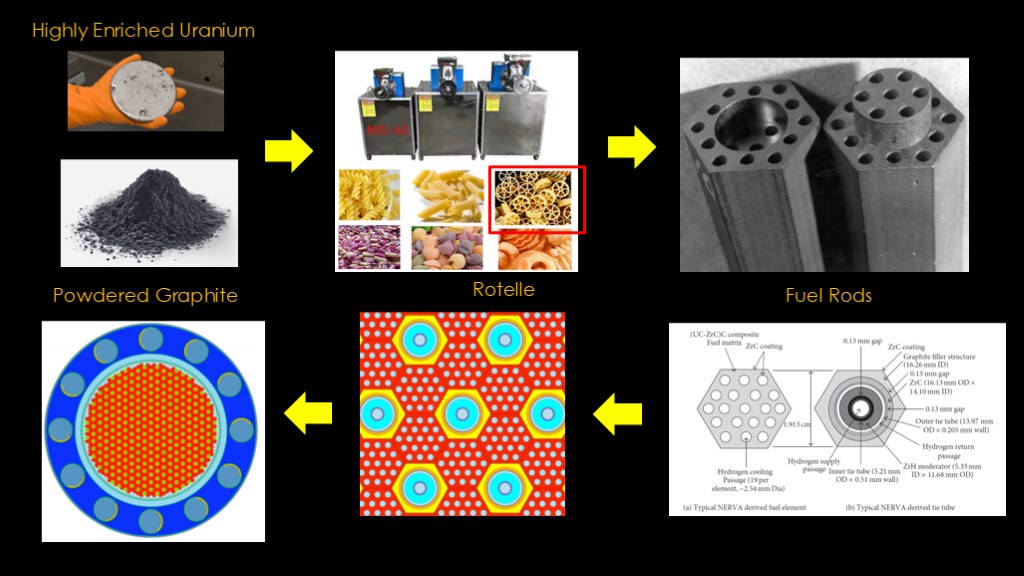
Here's how we make the reactor.
We mix highly enriched uranium and powdered graphite, put it into a pasta machine and use a die like the one used for rotelle, and then extrude out fuel rods with a bunch of holes in them. The hydrogen will flow through these holes and get heated up.
We then plate the fuel rods with Zirconium Carbide to prevent corrosion, and also create similarly sized "tie tubes". These are arranged in a hexagonal pattern and ultimately into a reactor core.
Around the core are a series of control drums; these contain moderators on one side and neutron absorbers on the other side, and rotating them allows the reaction to be controlled.
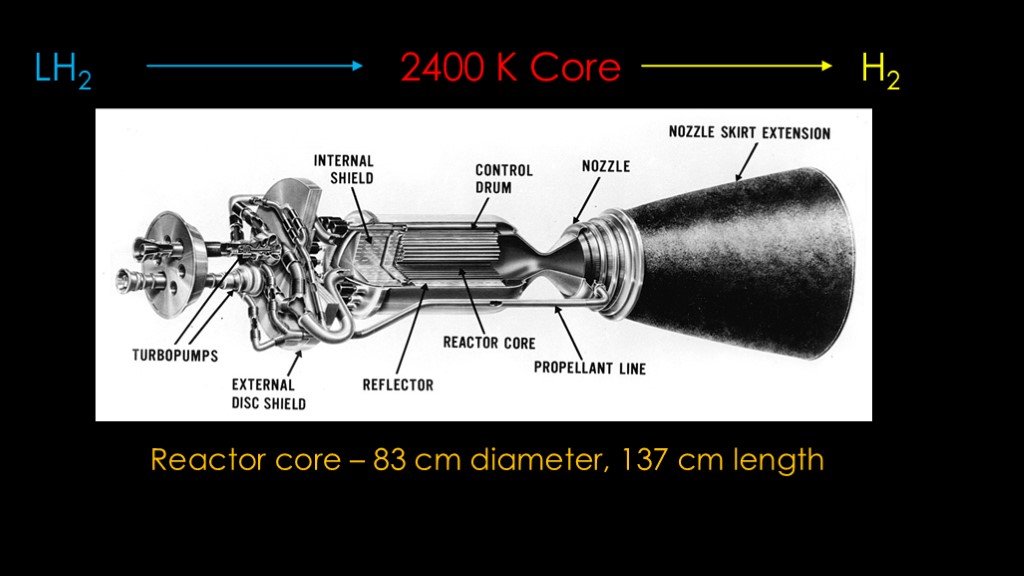
The resulting reactor core - which is around 83 centimeters in diameter and 137 centimeters long - is put into a metal tube, which is similar to the combustion chamber on a chemical rocket.
We now start up the reactor and pump liquid hydrogen into the reactor core, which is running at 2400 Kelvin. The heat vaporizes the liquid hydrogen and it expands and leaves the nozzles very quickly.
Because the exhaust is pure hydrogen and hydrogen is very light, the exhaust velocity is very high and that produces a high specific impulse, or fuel economy - roughly double what is possible with the best chemical rockets.
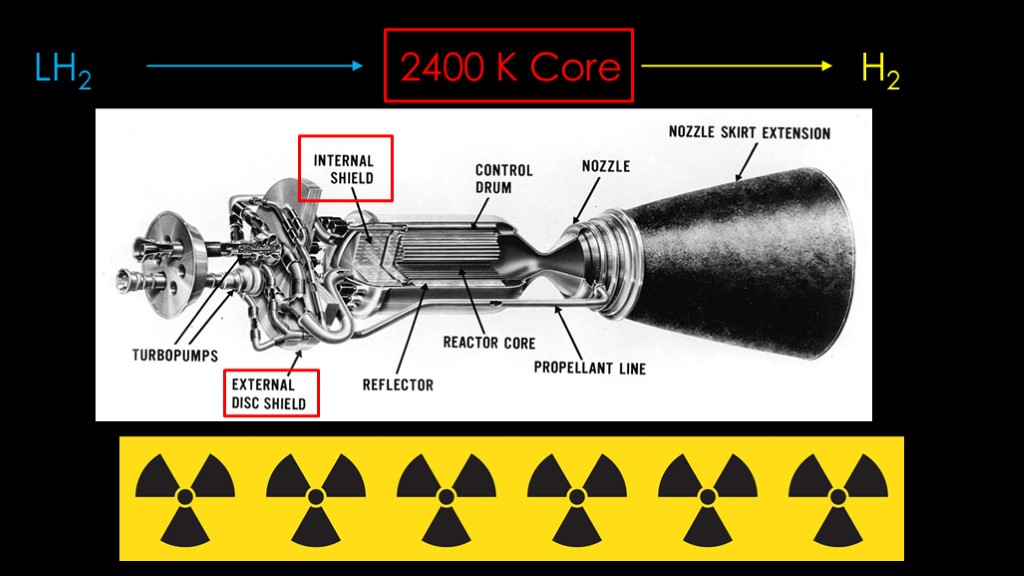
There are some downsides of nuclear thermal rockets.
The first is that 2400 Kelvin core. Hotter is better in terms of specific impulse, and chemical rockets run at around 3500 Kelvin. Unfortunately, the hotter you run nuclear cores the more likely they are to melt, which means there's a tradeoff between temperature and longevity.
The second downside is their weight. The core itself is quite heavy, and heavy shielding is necessary to shield the rest of the rocket from the radioactivity of the core. Thrust to weight ratio is very important for rocket engine performance and the extra weight generally cancels out the advantage of higher specific impulse.
The third downside is the liquid hydrogen propellant. It takes big and heavy tanks and because it is very cold it is difficult to keep liquid.
Oh, yeah. As soon as you start it up the engine it becomes very radioactive and nobody can get near it without a lot of shielding.
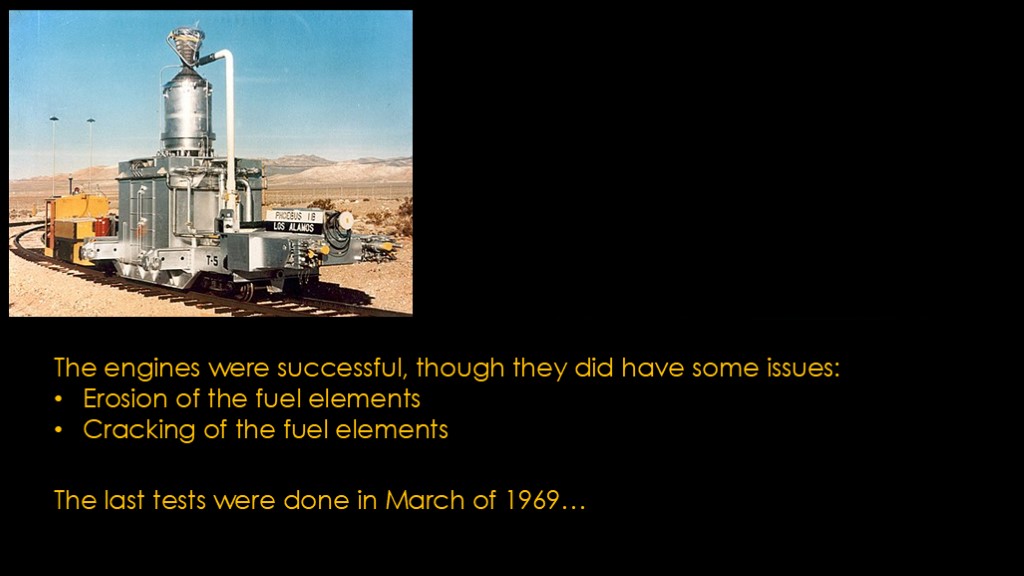
In the 1960s there was an extensive development program for Nuclear Thermal Engines run out of Los Alamos, with a test complex at Jackass Flats in New Mexico.
Test configurations were built onto rail cars which were then moved to remote test cells for testing with the engine exhaust pointed up into the air. This shows the Phoebus 1B engine on its way to testing in 1967
These reactors are highly stressed; this one operated at a heat output of 1500 megawatts, which is perhaps half the output of a nuclear power station.
Though the development work was ultimately successful, they did have ongoing issues with both erosion and cracking of the fuel elements.
Here's a video of one of the tests. And yes, they did just send the exhaust up into the air, sometimes with parts of fuel rods.
The last tests were done in March of 1969.
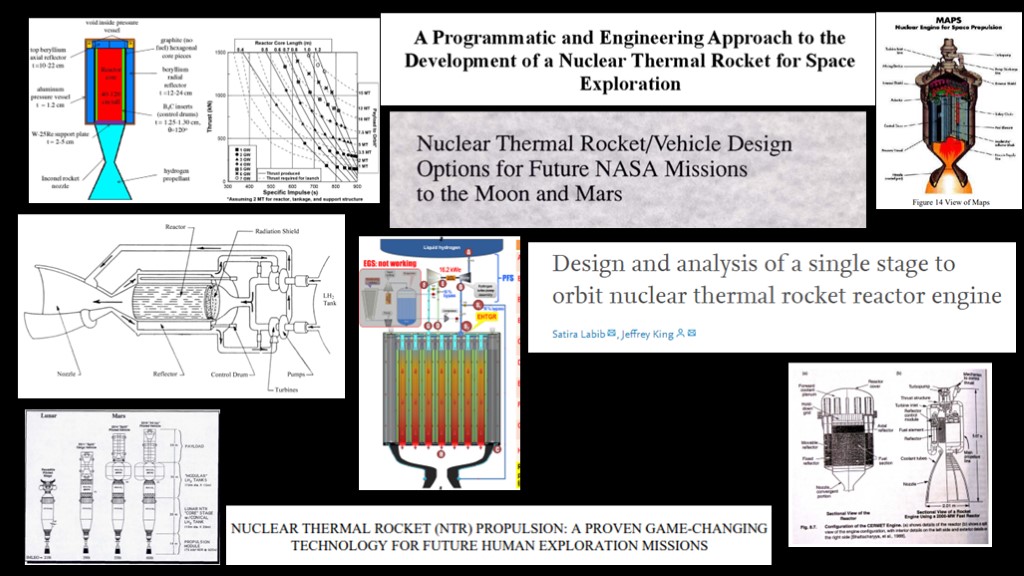
Since NERVA, there has been a lot of further research and design work done on nuclear thermal engines, which, with a few exceptions, has generated lots of paper and very little hardware.
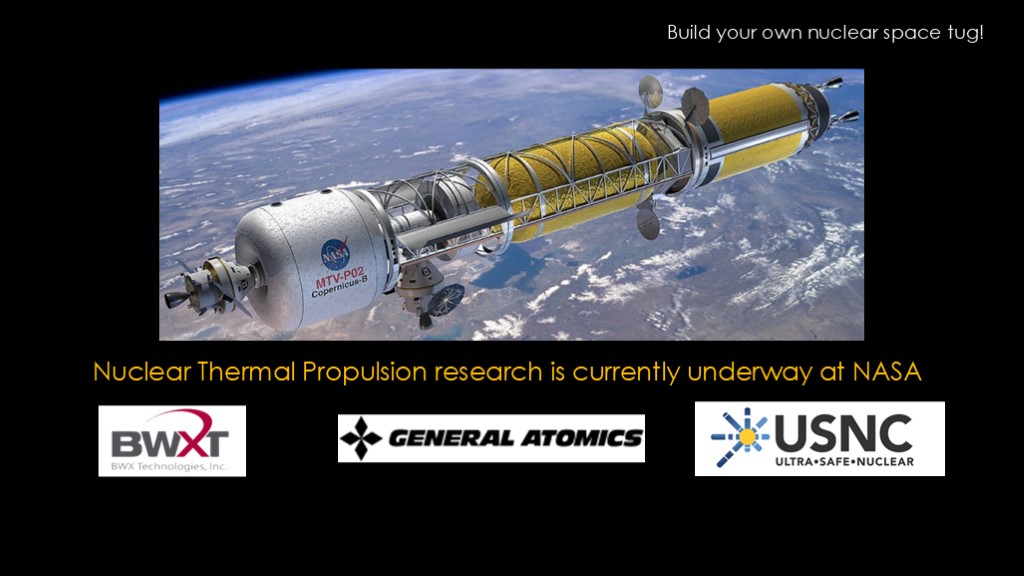
For the last few years, there has been a program at NASA to build an advanced nuclear thermal rocket.
There are small contracts awarded for initial designs for small nuclear thermal engines.
If you want to explore nuclear thermal rockets in more depth, see my video "build your own nuclear space tug!"
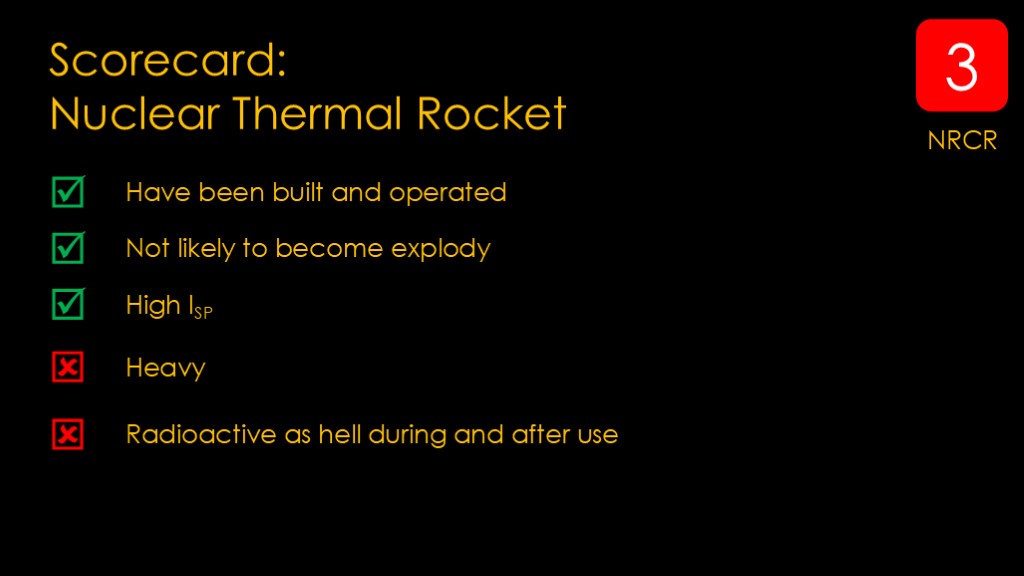
Here's a scorecard for nuclear thermal rockets...
On the plus side, they have been built and operated, they are not likely to become explody, and they have a high specific impulse.
On the negative side, the high specific impulse is negated by the heavy engine and heavy shielding required, and they are radioactive as hell both during and after use.
Overall, I'm going to give them a nuclear rocket craziness rating of 3; I don't think they are a great idea but you can probably build a real engine that generally does what you expect it to do.
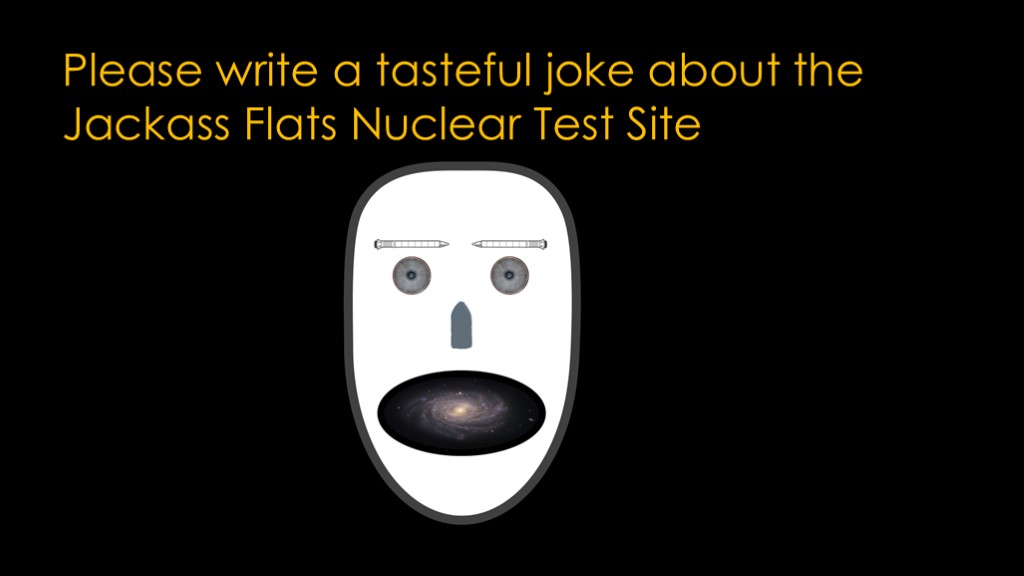
If you enjoyed this video, please write a tasteful joke about the jackass flats nuclear test site.